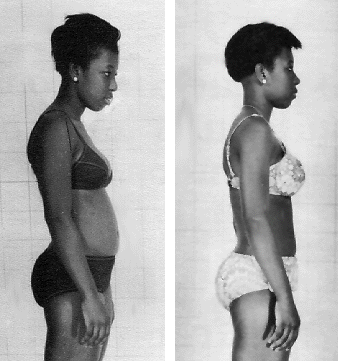Integrative Healthcare//Maggie Jones
Rolfing
Rolfing is named after it's founder, Ida Pauline Rolf. Dr Rolf earned her bachelors at Barnard College in 1916 and her PhD at Columbia University's college of physicians and surgons in 1920 where she studied biological chemistry. By 1922, Rolf held the highest non-tenured position for a scientist at The Rockefeller Institute for Medical Research.
She continued studying the hard sciences in New York and then later in Zurich until her interests shifted to alternative medicine and therapies. This shift was driven by the will to find solutions to her own, growing health problems.
Ida studied Yoga, Homeopathy, Chiropractic care, and Osteopathy finding that the basis of these therapies are that proper alignment, phyisiologic function, anatomical structure and the relationship one has with their environment are related.
Dr. Rolf agreed that the body functions best when the bony segments are in proper alignment. She added her observations that lasting improvement in alignment and an overall sense of well-being required a closer look at the effects of gravity on our bodies. She believed that the imbalances in structure placed demands on the body's pervasive network of soft tissues: muscles, fascia, tendons and ligaments, thereby creating compensations throughout the body structure. These compensations are what cause discomfort and a sense of dis-ease.
Dr. Rolf posed this fundamental question: "What conditions must be fulfilled in order for the human body-structure to be organized and integrated in gravity so that the whole person can function in the most optimal and economical way?"
Her life's work was devoted to this investigation which led to the system of soft tissue manipulation and movement education that we now call Rolfing®. In order to pass along her work to others and to make the education process accessible, she developed an expedient series of ten sessions, which came to be known as the Ten Series.

Ida P. Rolf giving a session to someone.
Learn what is is like to go through the process of Rolfing

The basic 10-series of Rolfing is a process-oriented approach to physical therapy. It is a form of bodywork intended to systematically balance and optimize both the structure (shape) and function (movement) of the entire body over the course of ten Rolfing sessions. Each session combines bodywork which focuses on freeing restrictions or holdings in a particular region of the body and movement exercises to strengthen, re-pattern, and become aware of the changes that take place during a session. A series of Rolfing sessions dramatically alters a persons posture and structure which can potentially relieve long term or acute discomfort and alleviate pain. After a session, you can expect to gain ease in movement and general comfort in your own body.
Sessions 1-3:
These sessions are intended to free up the superficial layers of connective tissue.The main themes for these sessions are to facilitate ease in breath, balance between the shoulder girdle and pelvis and functional support in the legs. After these initial sessions, many people report feeling taller, lighter, and more supported by their legs.
Sessions 4-7:
After the body’s superficial layers find functional support, the next step in the process is to find support deep within the body’s foundation. During these sessions, a Rolfer will work from the inner ankles, up the legs, through the pelvis and abdomen all the way up to the cranium.
Sessions 8-10:
These are the integration hours. After freeing all of the structures in the body, it is time to find relationship. These sessions facilitate an understanding of how to live in your body with ease and comfort in relationship to your external environment.
For more information on Rolfing, check out: Rolf.org

First photo taken before the 10 series, second photo taken after the 10th session.